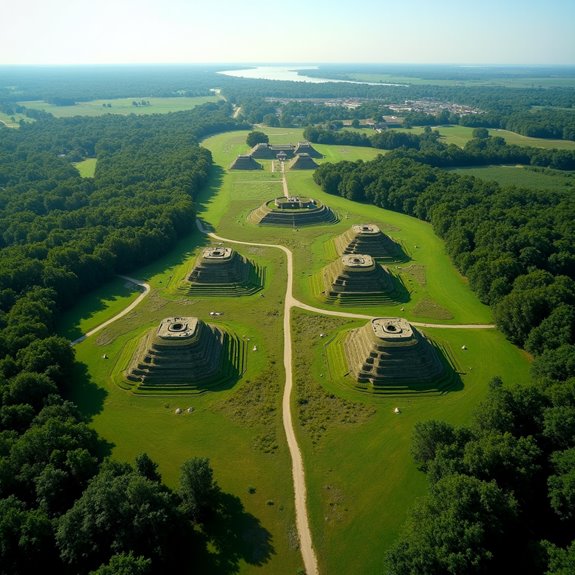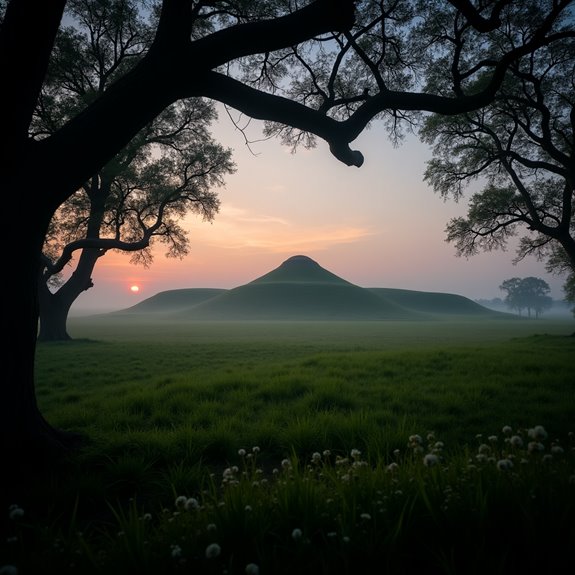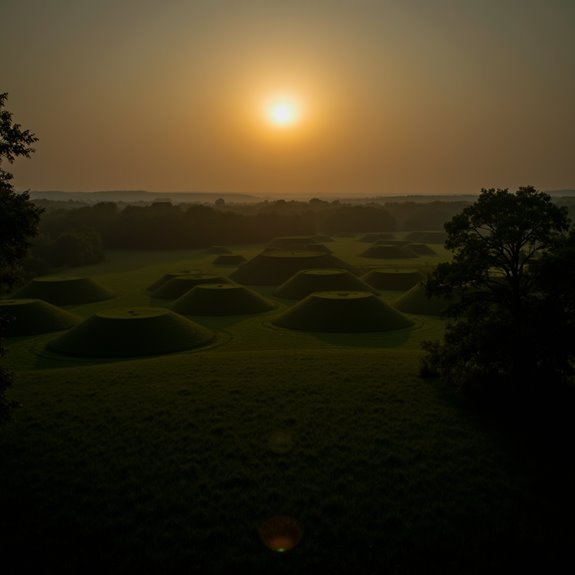Who Were the Cahokians — and Why Did They Disappear?
The Cahokians were a remarkable civilization that thrived in what is now Illinois, notable for their impressive earthworks and intricate social structures. Their rise was marked by advanced agriculture and urban planning, making them one of the largest urban centers in pre-Columbian North America. Yet, this once-flourishing society faced an untimely decline. The reasons behind their disappearance remain a subject of intrigue, prompting questions about environmental challenges, social change, and more. What truly happened to this extraordinary culture?
Introduction

The Cahokians, once a thriving civilization near present-day St. Louis, built a remarkable society characterized by impressive earthworks and complex social structures. They flourished between 600 and 1400 CE, becoming one of North America’s largest urban centers. Featuring vast plazas, intricate mounds, and an advanced trading system, their society relied on agriculture as a primary food source. The Cahokians’ innovative irrigation methods and communal living arrangements allowed them to sustain a large population. Despite their achievements, signs of decline began to emerge, prompting questions about their eventual disappearance. Factors such as environmental changes, resource depletion, and social unrest might have contributed to this collapse. Understanding the rise and fall of the Cahokians offers valuable insights into human resilience and adaptability.
Mound-Building Culture Emergence

As Cahokians developed their society, mound-building emerged as a defining feature of their culture. These impressive earthen structures served various purposes, from ceremonial sites to burial grounds. The mounds reflected both religious beliefs and social hierarchies, indicating the community’s organization and its leaders’ power. Cahokians expertly manipulated the landscape, creating complex earthworks that often connected various sites within their sprawling territories. This monumental architecture demonstrated their engineering skills and fostered social cohesion among the community members. The construction of mounds required significant labor and resources, highlighting the importance of collective effort in Cahokian society. Ultimately, mound-building set them apart from other contemporary cultures, marking a significant chapter in North America’s prehistoric history.
Notable Cases or Sightings

What notable cases or sightings have shed light on the lives of the Cahokians? Archaeologists have uncovered significant evidence through various excavations at Cahokia, particularly near Monk’s Mound, the site’s largest structure. Artifacts, such as ceremonial objects, tools, and pottery, reveal the complexity of their society. In one instance, researchers discovered a large community of houses grouped around central plazas, indicating social organization. The alignment of structures suggests astronomical significance, hinting at their advanced understanding of the cosmos. Additionally, oral histories from descendants of indigenous tribes provide insight into Cahokian traditions. These findings paint a vivid picture of a thriving culture that once flourished, highlighting the Cahokians’ ingenuity and communal life before their eventual decline.
Common Theories or Explanations
While scholars investigate the reasons behind the Cahokians’ disappearance, several common theories have emerged. One theory suggests environmental degradation played a significant role, as excessive agricultural practices could’ve led to soil depletion. Another explanation centers around climate change, indicating that shifts in weather patterns may have resulted in droughts that affected food supplies. Additionally, some researchers propose that social upheaval and conflict among neighboring groups could’ve led to the decline, as competition for resources intensified. Illnesses and pandemics are also considered potential factors, weakening populations and disrupting societal structures. Each theory offers insights, but the interplay of these elements likely contributed to the Cahokians’ eventual decline and disappearance from their once-thriving civilization.
Frequently Asked Questions
What Role Did Trade Play in Cahokian Society?
Trade played an essential role in Cahokian society, fostering connections with distant cultures. They exchanged goods like pottery and tools, enhancing their economy, facilitating cultural exchange, and strengthening community ties, ultimately supporting their complex social structure.
How Did the Cahokians Interact With Neighboring Cultures?
The Cahokians actively engaged with neighboring cultures through trade, diplomacy, and cultural exchanges. They shared innovations and practices, fostering relationships that enhanced their society’s development while also influencing surrounding communities across the region.
What Was the Architecture Style of Cahokian Structures?
Cahokian architecture featured large earthen mounds, particularly Monk’s Mound, and sprawling plazas. Their structures used a mix of wattle-and-daub and wooden frames, showcasing impressive engineering skills that supported complex urban planning and communal activities.
Are There Any Descendants of the Cahokians Today?
Some scholars believe modern Indigenous tribes, like the Illinois and other Native American groups, may trace their ancestry back to the Cahokians. However, direct lineage remains debated due to historical disruptions and diverse migrations.
What Artifacts Have Been Found at Cahokia?
At Cahokia, archaeologists discovered various artifacts, including pottery, tools, and ornaments. They also unearthed remains of elaborate mounds, suggesting the site’s significance as a cultural and political center for its ancient inhabitants.


